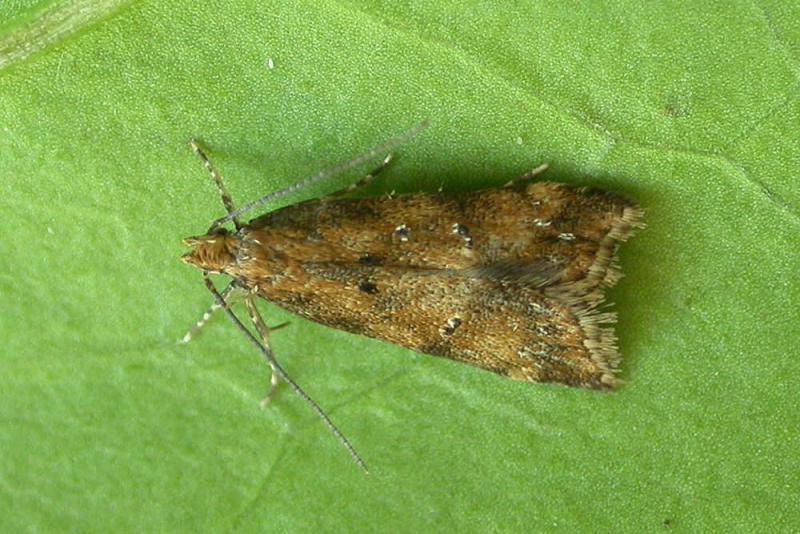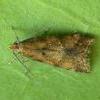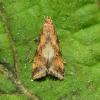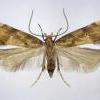35.028 Brachmia blandella (Fabricius, 1798)
Status and Distribution
Widespread and common over much of southern, central and eastern England, eastern and southernmost Wales and the Channel Islands. Local over the rest of Wales and some southern parts of northern England. The species may have been expanding its range northwards during the late 1990s and the first few years of the 21st century but indications are that this expansion has now come to a halt.
Apparently absent from, much of Northern England, Ireland, Northern Ireland, Isle of Man and, with one exception, Scotland, the latter being a single confirmed specimen from Glasgow on 15th July 1982. The recorder of this moth has advised that potential confusion as to the moth's origin was very unlikely, but a visit to southern England a few days after this date might have led to the specimen being mislabelled on the setting board.

Provisional map
Foodplant and Larval Feeding Signs
Ulex europaeus (common gorse), see plant distribution map; occasionally as a gall inquiline on Abies grandis (grand fir) or in the seed-heads of Cirsium palustre (marsh thistle).
Within detached, withered gorse flowers lying amongst the spines of the bush, appearing to feed on the stamens, and on very small pods.
Habitat
Utilises a wide range of habitats including grassland and woodland.
Finding the Moth
Larva: in captivity, intially, in a spinning on the broken ends of live gorse and, later, possibly on algae and small black fungi on the surface of dead plant material. In the wild after winter, in a spinning on detached, withered gorse flowers lying amongst the spines of large old bushes, appearing to feed on decaying stamens and very small pods. Full grown larva have been found feeding in live gorse flowers, spinning two together. It has also, on single occasions, been reared from collected insect galls on Abies grandis (grand fir) and from Cirsium palustre (marsh thistle) seed-heads.
The final instar larva is similar to early instars of Agonopterix nervosa and, as with the Agonopterix larva, can wriggle in a rather violent manner, unusual in gelechiids. B. blandella larva are paler, a slightly different tone of brown to A. nervosa and do not grow longer than about 8mm. The most distinctive feature between the two is the dark brown or black, glossy, sclerotised ring around the base of the ventral prolegs in A. nervosa - this ring is translucent or, at most, very pale yellowish brown in B. blandella. The larva of Anarsia spartiella and Blastobasis adustella have also been found feeding in decaying gorse flowers. More details can be found in Heckford and Sterling, 2005 (see Publications - Published Papers).
Adult: can be beaten from old, large gorse bushes, flies at dusk and comes readily to light.
Similar Species
When at rest, the rather triangular shape with pointed wings and the mottled pale-brown appearance make this a distinctive species.
Single brooded from late June to early August. Has been found on a few occasions in mid- to late September.



